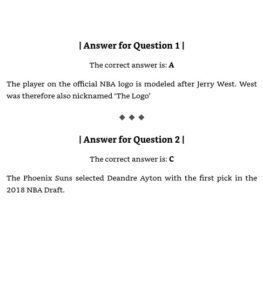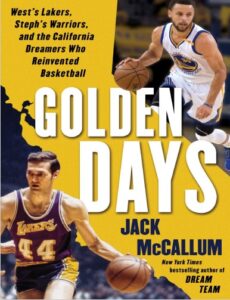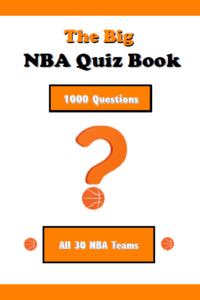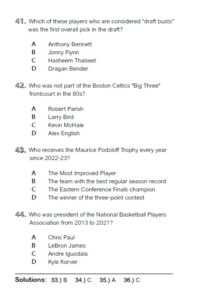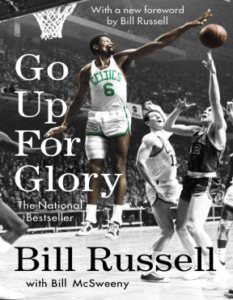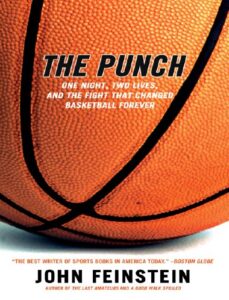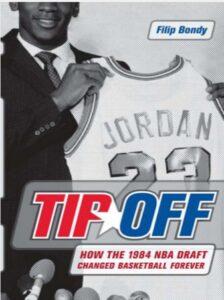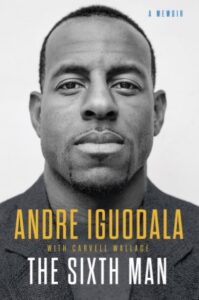The most recent NBA Book I read was the biography of Tyrone “Muggsy” Bogues. This book was particularly close to my heart, as I discovered the NBA as a child in the mid/late 90s and watched basketball for the first time (after Michael Jordan‘s first comeback). And let’s be honest: if you watched the NBA as a child in the 90s, Muggsy Bogues was one of your favorite players.
Muggsy Bogues is of course known for being the shortest NBA player of all time (5’3″ or 160 cm). That alone made him a favorite player of many NBA fans, especially children. He gave hope to many young basketball players. If he can do it, maybe I can too. And if not in basketball, then in other areas of life. If Muggsy can overcome such an obstacle, why shouldn’t I be able to do it too?
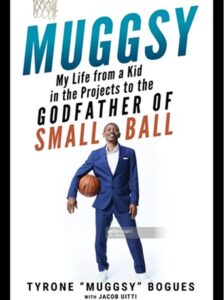
In the first part of the book, you learn more about how Muggsy Bogues grew up, how he experienced his childhood and youth, and how he became the completely fearless professional basketball player we know today. It becomes clear that his height was by no means the only obstacle he had to overcome.
“My Life from a Kid in the Projects …”
Muggsy Bogues grew up in Baltimore in rather poor circumstances, at a time when drugs and poverty were becoming an increasingly serious problem in the city. His father and older brother also came into contact with drugs and the law. His father even spent a long time in prison and missed his youngest son’s entire development into an NBA professional. However, the family, especially his mother and sister, are described as very warm-hearted. Muggsy Bogues’ love for his family comes across very clearly in the book.
As a young boy, Bogues was shot by a neighbor but survived his injuries. He witnessed two people being killed on a basketball court at close range. Due to his height, he had to fight for a long time to even be selected for a team in pick-up games.
One of the best high school teams ever
When you read about his childhood in this book, it’s easy to understand how Muggsy Bogues became an NBA veteran who played more than 900 games in the NBA (regular season and playoffs). He always had to fight hard to get where he wanted to be and had seen things as a child that made situations on the basketball court seem like kindergarten. He describes how opposing fans often laughed at him during games after seeing him for the first time. After the games, no one laughed anymore, and he often received standing ovations from the same people who had considered him a joke just a few hours earlier.
I also learned a few new things about his path to the NBA. Being European, I know next to nothing about high school and college basketball. So I didn’t know that Muggsy played on one of the best high school teams in US history. Bogues, Reggie Williams, Reggie Lewis, and David Wingate all played on the same team at Dunbar High School in Baltimore. All four had long NBA careers, although Reggie Lewis (the only one of this group of friends to later become an NBA All-Star) tragically died far too young. In Lewis’ last NBA game, the opponent was, of all teams, the Charlotte Hornets, led by his friend Muggsy Bogues. It was in this game that Lewis collapsed for the first time, and he died a few months later.
Muggsy Bogues had to fight for every step
Bogues also describes how he had to work hard to earn the respect of his opponents, coaches, and fans throughout his NBA career. Together with Larry Johnson, Alonzo Mourning, and his good friend Dell Curry, he shaped the early days of the Charlotte Hornets, one of the most popular teams of the 1990s. Bogues describes almost every player as “my friend,” which is not hard to believe. He always made a very warm and friendly impression. This impression is further reinforced by this biography.
The reader also learns a lot about Muggsy’s private life. I have already mentioned his love for his family. Among other things, his older brother Chuckie lived with Muggsy in one house for many years. While Muggsy was recovering from a knee injury, Chuckie tried to overcome his drug addiction with the support of his younger brother, and he succeeded. We also learn that Bogues married his wife twice. At the time of their first wedding, both were still quite young. During his time with the Charlotte Hornets, the two separated and remained sepearted for many years. They tied the knot again on Muggsy’s 50th birthday.
With a Foreword from Steph Curry
Another interesting aspect of this book are the two forewords. One was written by Muggsy’s former teammate and friend Alonzo Mourning. The other was written by Stephen Curry, whose father Dell played alongside Bogues on the Hornets and Toronto Raptors, as mentioned above. Steph and Seth Curry grew up sround Muggsy Bogues, as the families were very close off the court and still are today. Curry describes how Bogues had a big influence on him and taught him the some points of playing point guard at a young age. In particular, he mentions that Bogues advised him early on to work on his core strength, as Curry, like Bogues, would never be the biggest or strongest player. Stephen Curry absorbed Muggsy’s tips like a sponge, and we have been seeing the results for years.
Overall, I can recommend this book to any NBA fan who loved the NBA in the 90s and wants to learn more about Muggsy Bogues. His story is still a great source of motivation today. Few players in the modern history of the NBA have had to overcome so many obstacles and prove themselves time and time again.
Get the book at Amazon
